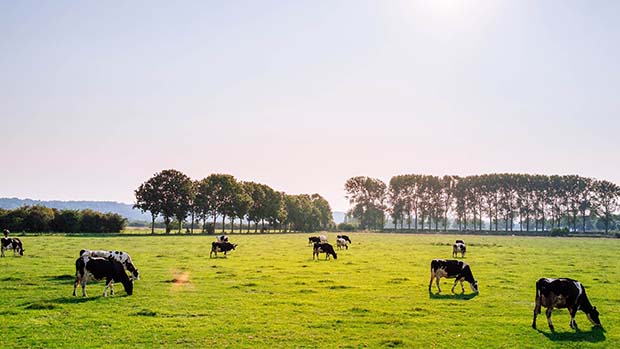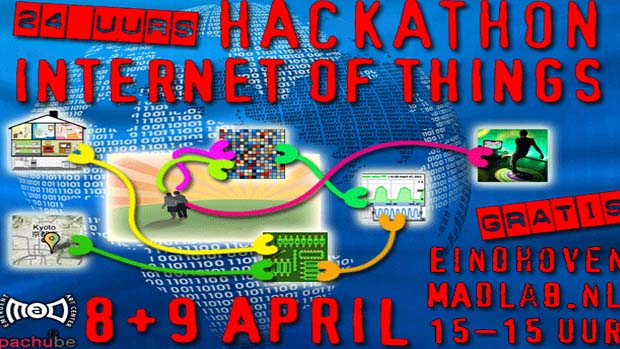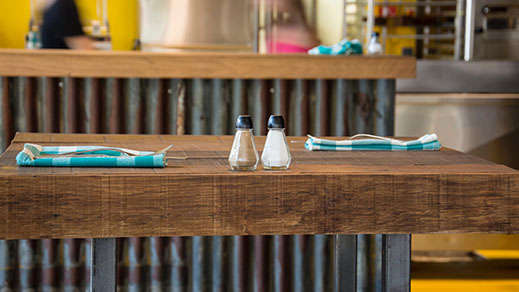Is your kettle watching you? The internet of things.
Expert reviewers
Essentials
- The internet of things (IoT) refers to a network of internet-connected physical objects (anything from a kettle to a car to a building) that have the ability to create, send, receive and process data.
- IoT has great potential to change the way we live and work.
- Security and privacy risks need to be addressed before the IoT becomes widely accepted.
What is the internet of things?
The internet of things is the fusing of physical items and actions in the real world with data processing in the digital world. ‘Things’ can range from your humble kettle to a jet engine in the sky and everything in between.
IoT devices can also include a variety of sensors, software, actuators, electronics and more, all collecting, processing, transferring and sharing a constant stream of information and real-time data.
This isn’t a distant future—the IoT already exists. In 2017 there are estimated to be 10 billion devices connected to the internet (most of them smart phones and computers). By 2025, analysts predict this number will be anywhere between 20 billion and 75 billion.
The move to an IoT ecosystem is being driven by expanded internet connectivity—in particular high mobile adoption, low cost sensors able to be fitted to devices, and an increase in IoT investment.
But why, you may be wondering, would anyone want their kettle, car or other devices connected to the internet? Is this just technology for technology’s sake, or will this really help us live better lives?
Possible applications
The IoT has been labelled as the ‘next Industrial Revolution’ because of its potential to completely change the way we live, work and interact with the world. Analysts have predicted market spend to grow from US$592 billion (2014) to more than US$1.3 trillion in 2019. In addition, the OECD Digital Outlook 2015 has noted that the IoT is ‘an essential part of its digital agenda for Europe 2020’.
Life in the future could look very different as major industries, as well as general consumers, jump on board the IoT train. Let’s take a look at just some changes we might see…
Agriculture and food
Humans have been farming the land for thousands of years, but IoT devices might just take it to a whole new level. Devices in the pipeline or already available include:
- virtual fences to keep livestock within set limits
- sensors attached to cows that allow you to know when they’re ill, or ovulating, without having to personally inspect each animal
- soil sensors that give immediate readings of acidity or temperature, allowing for better crop management
- Scan codes that allow consumers to view the whole supply chain of a product
- reducing food wastage through better monitoring of temperature packing conditions.

Smart cities
Smart cities can provide workable, worthwhile solutions to common problems such as congestion, pollution and energy supply. Some of the most exciting developments in this area include:
- smart roads with sensors, data capture and connectivity that notify you of an accident or are responsive to changes in the environment such as low light or rain.
- sensors to direct you to free vacant parking spaces
- waste management systems with bins that notify the pickup company when they’re full
- lights that change wattage depending on the conditions or on detected movement
- selective irrigation to only water plants in the city that need it
- sensors that can track where pollution is being generated and how it is dispersed.
Healthcare and wellbeing
Minor changes to the healthcare industry could result in huge savings for government, providers and customers. For example:
- IoT devices could collect data, automate processes and cut waiting times
- remote monitoring of patients may reduce the need for trips to the doctor or time them when they're needed
- automation may improve the efficiency of ordering of resources and supplies
- the IoT could allow patients to manage their own information and personal conditions in real time.
Energy and resources
Simple mathematics dictates that more people = greater energy usage. But what if we could change the equation? The IoT may be able to help, allowing us to be smarter in the way we collect, store and use energy and resources through:
- smart meters in homes and businesses to record and manage energy use
- smart grids that monitor energy use and distribution in real time and that could alter flows depending on need
- monitoring water flow with real-time information on pipe capacity and condition, pinpointing and diagnosing leaks etc.
Transport
Planes, trains and automobiles—humans make billions of trips every day. IoT technology has the potential to create safer, cleaner, more efficient modes of transport through:
- smart cars that drive themselves, reducing accidents, pollution and commute hassles
- smart rail systems that anticipate and monitor events that may affect performance or safety, as well as predictive and preventive maintenance to reduce time that trains are ‘off-line’
- IoT devices attached to components of transport, such as engines or aircraft components, to monitor performance, relay information in real time and record maintenance issues and flight data
Consumers
To add to our smart phones and tablets, the future of the IoT will see us living in smart homes and wearing and using even smarter tech. This may include:
- wearable tech (from fitbits to pacemakers) to track our fitness, health and activity
- under-the-skin microchips to give us access to our own network (unlocking doors, withdrawing money) without the need for keys or a card
- networking devices that answer questions, relay news, play books or music and make calls, and which connect with other smart home devices such as lighting and heating to operate them remotely
- smart fridges, printers and appliances that automatically re-order items such as food and ink cartridges
- smart meters that allow us to reduce energy use, change the time of energy consumption and identify faults.

Security and privacy challenges
There are a multitude of issues and challenges that need to be resolved before the IoT can reach its full potential.
Data storage
With billions of new devices collecting information, the sheer size of the amassed data is mind boggling and will be a substantial storage issue.
But more than this, where is all this data being stored? Who has access to it? What is it being used for? The gathering and use of our digital data is already of concern for many of us, but will intensify as even more data is collected. Even de-personalised data, if enough of it is collected (and we leave our digital footprints with every click we make), can form a reasonably accurate profile of a person.
Big Brother 2.0
We may not seem particularly concerned about privacy as we upload every detail of our lives to our social media accounts, but the IoT could take this to a whole new level. Currently we control and consent to what information we share when we press the ‘post’ button. Though, as stated above, every click we make online is being tracked and collated.
However, if devices around you are collecting data all the time, this allows manufacturers and marketers to potentially collate information about you and the way you live your life that you may not want to share. By using IoT devices you may end up divulging personal and very private information unknowingly. In 2017 a company was taken to court for allegedly recording—via an app attached to their headphones—what songs their users were listening to. In an even more unsettling case, a company which sold a ‘smart vibrator’ adult product settled out of court for secretly collecting details of how customers used the device, including frequency, settings and temperature.
On a positive note, de-personalised information about how customers use products could support more effective product development, as manufacturers would be able to design new and improved products based on data direct from ‘the field’.
Hacking and unauthorised access
The internet already provides fertile ground for hackers and cyber-criminals to illegally access information and target vulnerable users and systems. A future IoT would provide endless access points from which criminals could enter networks, view data and make unauthorised alterations.
Currently most IoT devices are built with their primary function in mind first (for example, a fridge keeping food cold), with security features running a distant second. Consumers who buy these products often don’t read past the basic instructions, or bother to reset passwords or set up security features. Hackers have repeatedly shown how simple, seemingly innocuous devices such as baby monitors, toys and fitness trackers can be compromised, leading to unauthorised data collection, alteration of data or even recording of video and voices.

Similarly, by monitoring the activity in your smart home, such as when the heater was turned on or when the last movement was detected, hackers could potentially know when you’re not home (or worse, home alone). Autonomous, self-driving cars are in the not-to-distant future, but even they have been hacked by outside sources, able to take control of the vehicle and increase its speed or hinder its braking.
Imagine then these hacks taking place on a much larger, industrial scale—at a power plant, a chemical factory or main transport hub.
In a recent survey, half of the respondents indicated that they were concerned about security ‘when everything will be connected to the internet’. As with any new technology, the benefits have to be weighed against the potential negatives, and there is no doubt there are sizable security challenges that need to be overcome before the IoT goes global. If you're looking for a change in career, becoming an expert in improving cyber security might be worth considering!
Tech for tech's sake?
While all this sounds very exciting, there is the chance that much of this won’t come to pass. Aside from the very real and legitimate security concerns, there is the possibility that we, as consumers, start to experience technology fatigue. Sometimes it’s enjoyable to get off the couch and make your own cup of tea, or to water your own garden. Are we really moving towards the point that we don't want to do anything ourselves? Do we really need an app for everything?
It seems every company has been caught up in the rush to embrace new IoT capabilities, putting the word ‘smart’ in front of any device, resulting in some strange and, let’s face it, totally useless products. Take for instance, the smart diaper, which, with inbuilt-sensor, allows parent’s ‘avoid the sniff test’ to check if their baby needs a change. Or how about the smart salt shaker, which can play music, change colour and ‘surprise your guests and their palate with fun, interactive way(s) to shake salt and bring out the flavour’.

We need to ask ourselves—is it really any easier to monitor the pots on your stove by buying an internet-connected cooktop, downloading the relevant app, then checking the app to see the saucepan temperature, rather than just walking over to your stove to look at what’s cooking? Just because something can be connected to the internet doesn’t mean that it should be, or that by doing so would provide any useful benefits to humanity.
Dubbed by some as ‘the internet of useless things’, so ubiquitous have these unnecessary technologies become that they even have their own twitter account. As Paul Armstrong, a contributor to Forbes Magazine noted, ‘on the one hand [it’s] hilarious, on the other, it highlights a very serious problem: massive waste. Time, money, and resources—the misuse and abuse is both apparent and appalling.’
There is no doubt the internet of things has some incredible potential, across multiple industries and environments. Much of what is being proposed and tested is exciting and ground-breaking, with the ability to affect real-world, meaningful change. However, we need to temper our enthusiasm to ensure that the right products are being created, and that our security and privacy—on an individual and societal level—are protected. Just as we could not have predicted how the internet would grow and evolve, we don’t yet know where the IoT could take us, but one thing we do know: it’s bound to be interesting.





